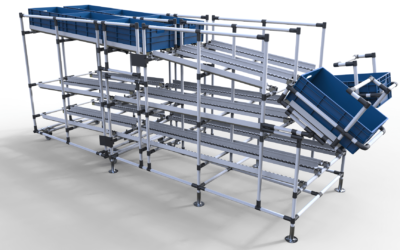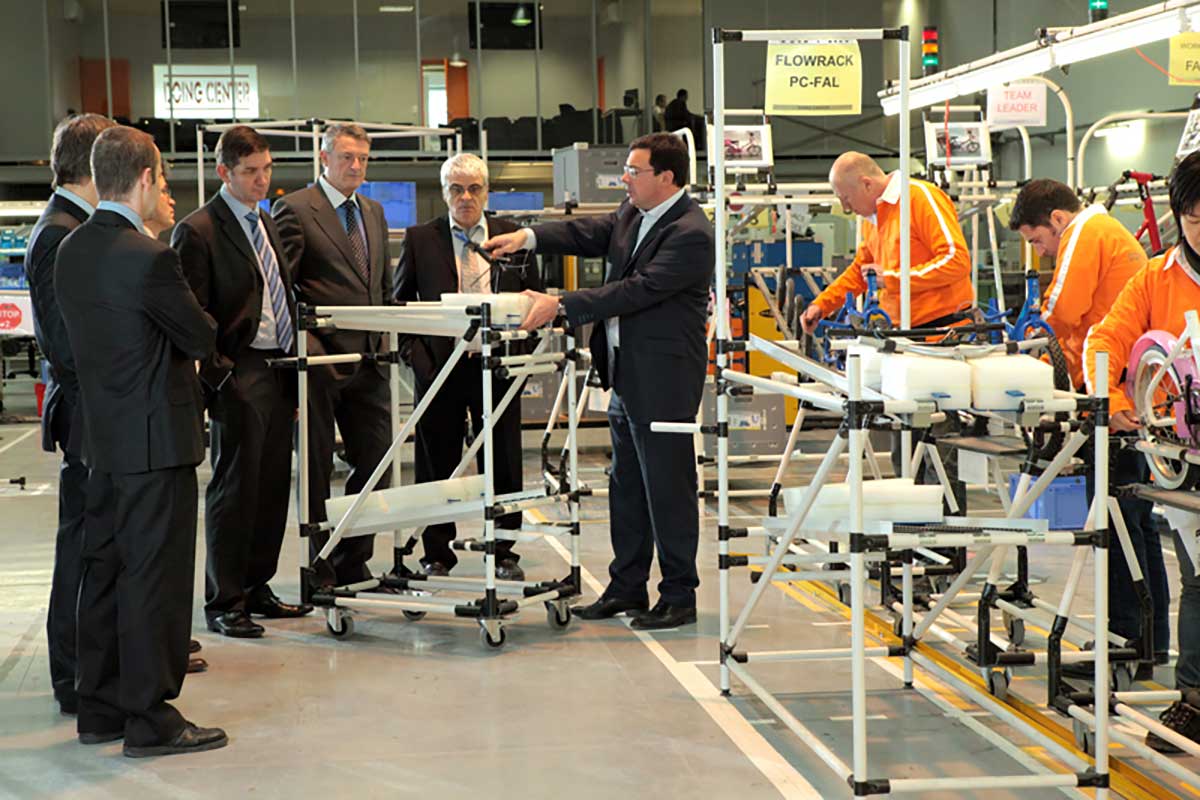Could the current UAW disruption be your opportunity to improve material flow? Discover 3 areas you can quickly improve!
The UAW’s decision to initiate a strike, or any large-scale industry-wide transformation, can send shockwaves throughout the manufacturing landscape. This leaves manufacturers across various sectors uncertain; the ripple effect is far-reaching and impacts us all.
In response, manufacturers are putting more pressure on their suppliers to take on a greater share of the operational burden. This includes demands for increased inventory, more intricate product sequencing, stringent quality inspections, repackaging requirements, and, in some cases, light assembly tasks.
As these multifaceted processes pile up, the need for lean manufacturing practices becomes more evident than ever. Amidst this short-term disruption and with many positive trends coming in the year ahead for manufacturing, there lies a unique opportunity for manufacturers to weather the storm and implement much-needed improvements to solidify a competitive edge.
Each team lead maintains a project roster ready to be prioritized based on the allocation of resources and timing, making right now an opportune moment to enlist assistance in executing your projects. Our experts specialize in efficiency improvements and optimizing material flow processes for manufacturing companies.
Want to know more about how can this be accomplished effectively? Let’s dive in.
Seizing the Opportunity and Adapting to Disruption
One of the upsides to disruption, such as a UAW strike, is that it creates opportunity – but only for those ready to adapt. Manufacturers must be more efficient and flexible than ever to remain competitive.
Here are some important things to keep in mind during this time:
- High wages, labor shortages, and competition will continue challenging manufacturing, but many positive trends indicate our strong future. So, while executives focus on recruiting, they are simultaneously looking for ways to do more with less.
- Searches for “Smart Factories” have risen by 179% over the last decade, meaning manufacturers recognize the need to adapt and improve their production. A poll of over 200 C-suite decision-makers at global manufacturing companies found that 68% listed improved resilience and agility as a top business priority in the coming years.
3 Areas You Can Improve With Low-Cost & High-Impact Solutions
The UAW strikes might be causing a disruption in business, but don’t just sit on your hands. Take advantage of this unique time to make great improvements to your business.
1. Warehouse Flow
Historically, the warehouse has been neglected and is usually the last place to receive improvements. However, today’s warehouses are no longer simply static storage, and creating a “Lean Warehouse” is critical if companies are to pick, pack, and ship efficiently.
Have you been tasked with stocking more inventory? Or do you need to ship more frequently or kit in sequence? Or maybe you need to provide light assembly services for your customers. Whatever the case, reducing non-value processes in the warehouse is more vital than ever, and setting up a Lean warehouse positions you for the next step of material delivery to production.
Material Display
Material display is critical to efficient production, and starting in the warehouse to improve the flow of processes makes the most sense. It’s often where the internal material flow process begins.
Here are some key areas of consideration:
- FIFO (first-in-first-out): Do you have flow in the warehouse?
- Are hand-sized, higher-running items located at floor level to minimize the step of vertical picking?
- Is there an opportunity to utilize smaller containers for more efficient part handling on the assembly side?
- Can the same carts used for picking in the warehouse be used to deliver finished goods to assembly?
Pack Stations
Poorly organized pack stations in warehouses can greatly impact production times and efficiency in warehouses.
Here are some key areas of consideration:
- Are your pack stations modular so they can easily adapt to changing customer requirements?
- Is the area set up for success? (ex. well-lit, tools organized efficiently, only the right materials are close by, safe and ergonomic workspaces, etc.)
2. Materials Delivery and Part Display
Materials delivery and part display go hand in hand. When attempting to reduce forklift traffic in assembly areas, we always consider where materials are being picked up from and where they are getting delivered. Proper carts can greatly improve the efficiency flow from the warehouse to the point of use.
There are many low-cost options to improve quality, ergonomics, and productivity in delivery and display just by revisiting how materials are presented to the operator inside the work cell. Consideration of where materials are stored prior to use and how they will be used at the point of service can be the right next step to kitting and your future state of material delivery.
Lineside Display (Before Kit Carts)
Before investing in kit carts, evaluate the packaging used to move your product (Bulk Gaylords, Baskets, Crates, hand totes, etc.). Then, consider the structures needed to present these products to the operator (Stands, Flow Racks, or use the kit cart as the display).
WIP Carts/Kitting
Is delivering parts without packaging an option? You can often present a combination of parts with and without packaging on the same kit cart. Eliminating the packaging can simplify handling for the final user and reduce space and overhandling from containers.
3. Workspace Organization
To be successful, having top-notch workspace organization is crucial. There should be a place for everything, and everything should always be in its place. But the most common challenge with workstations is the space they consume. A simple workshop to determine what tools and supplies are necessary to do the work, then communicating with the operators for the most ergonomic and convenient locations for those items, is all it takes to reduce your workspace and improve flow.
Error-Proofing the Workspace
Creating flow is not only for efficiency’s sake but can also improve quality as parts move through the process consistently (standard work). This practice also makes cross-training and personnel changes much easier to manage when needed.
Geolean: Your Path to Lean Success with Solution Design for Low-Cost Material Handling
Always remember – big change takes time and money, so it’s best to start with low-cost material handling solutions that can be installed quickly and evolve with you. At Geolean, we have designs and structures that utilize the most flexible materials, ensuring you can realize the quickest ROI with minimal risk and high profitability, ultimately setting you up for the next steps in lean manufacturing.
The Geolean team specializes in kickstarting efficiency and material flow changes for manufacturers. Every team lead has a project list waiting for the right time and needed resources to accomplish the desired result, and right now could be the perfect time to call in experts to help you execute.
Are you ready to take the first step towards a more efficient future? Contact Geolean today and unlock the potential of solution design for low-cost material handling that will propel your manufacturing operations toward increased profitability and lean success.



